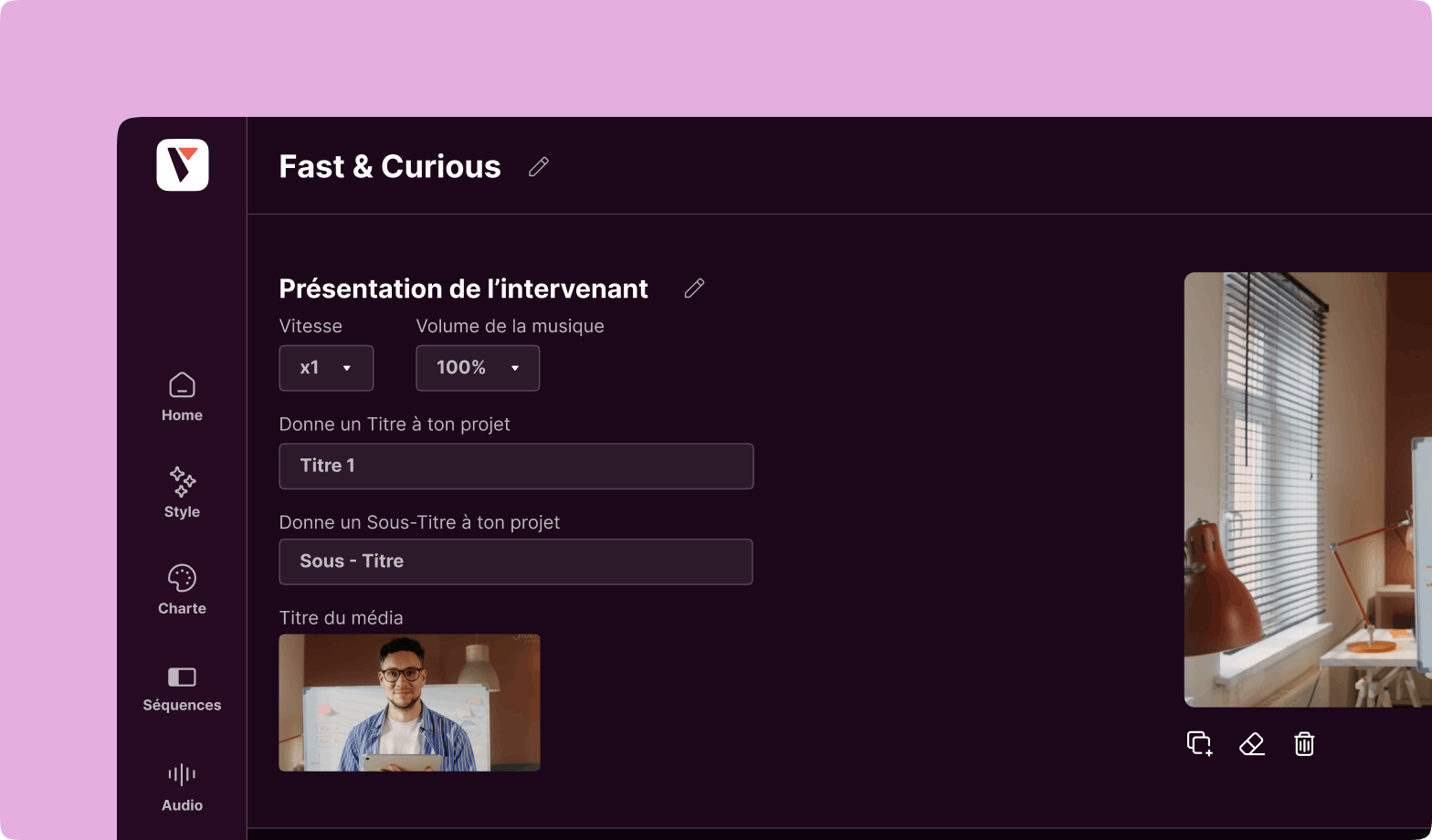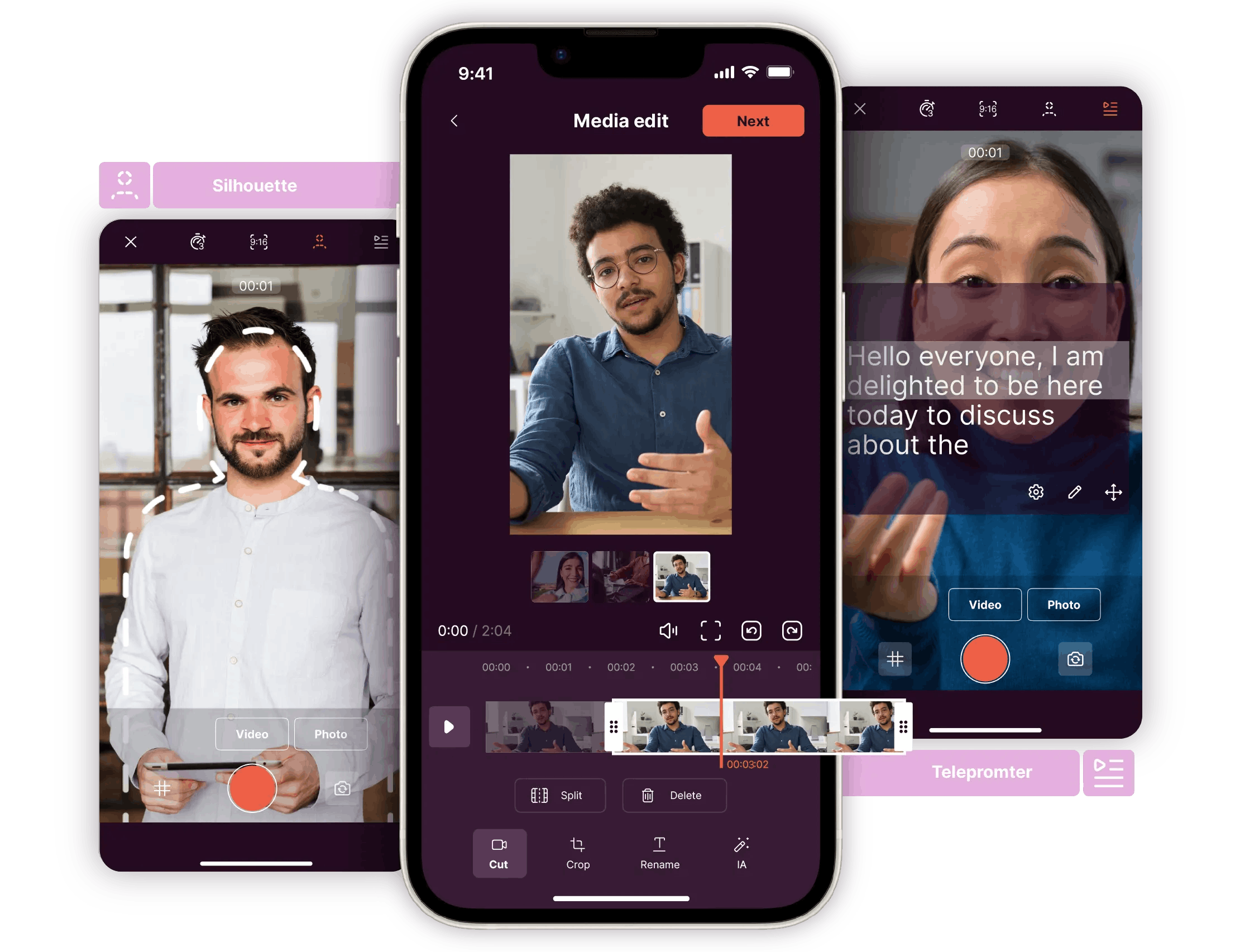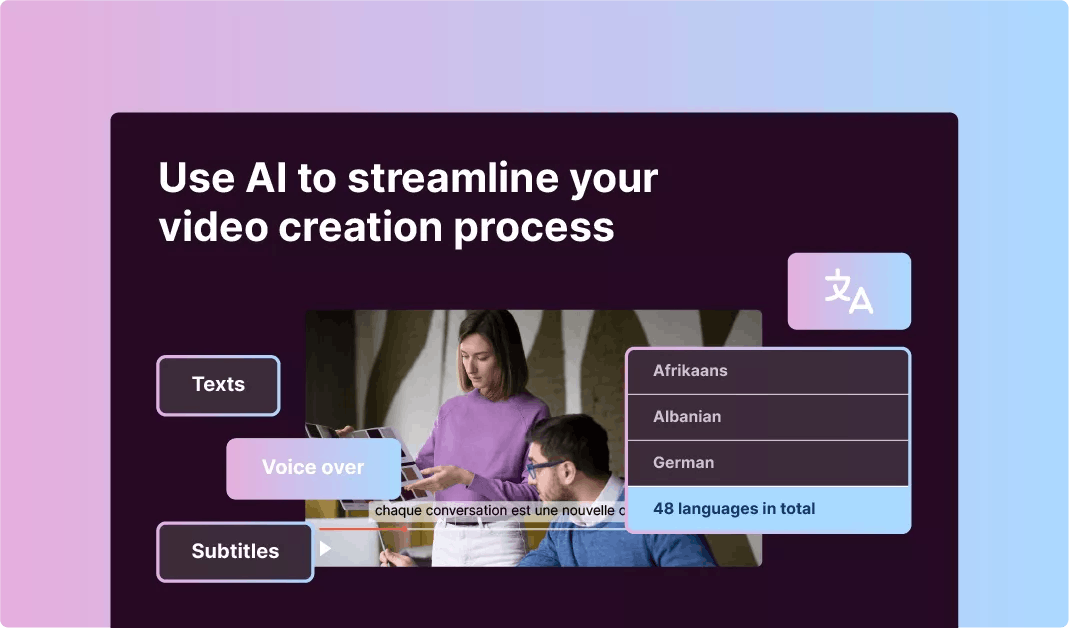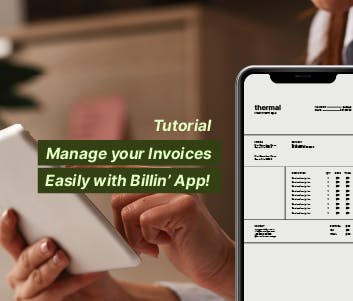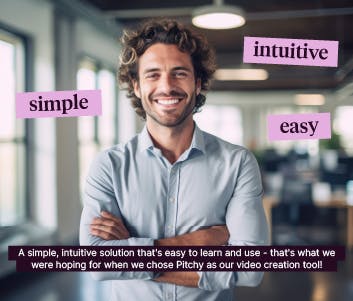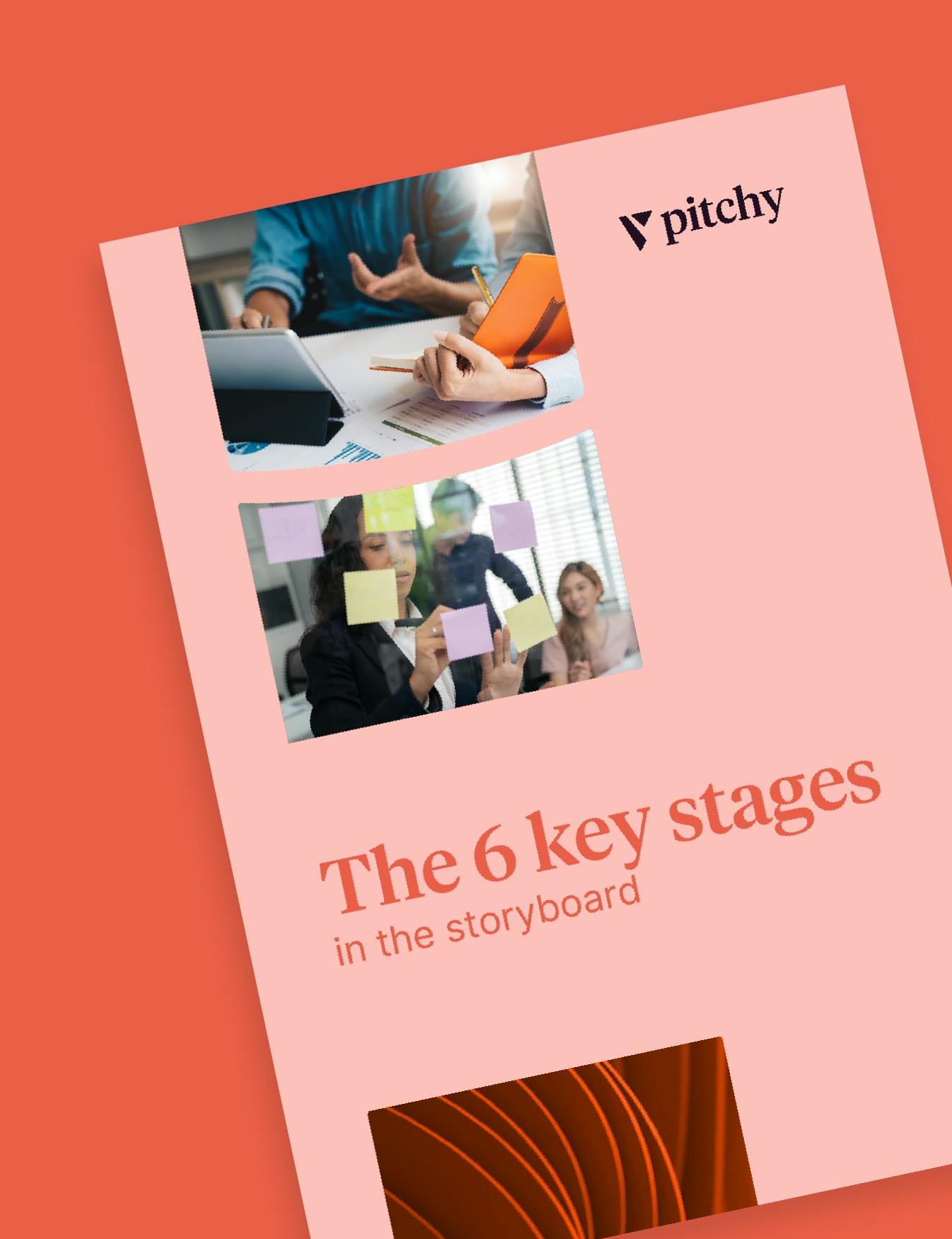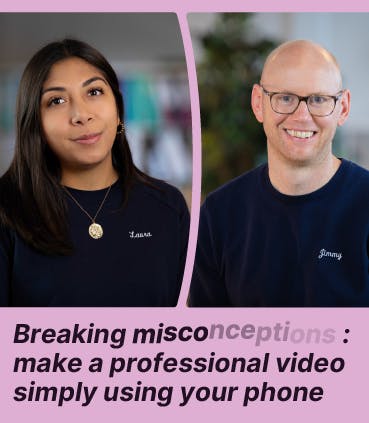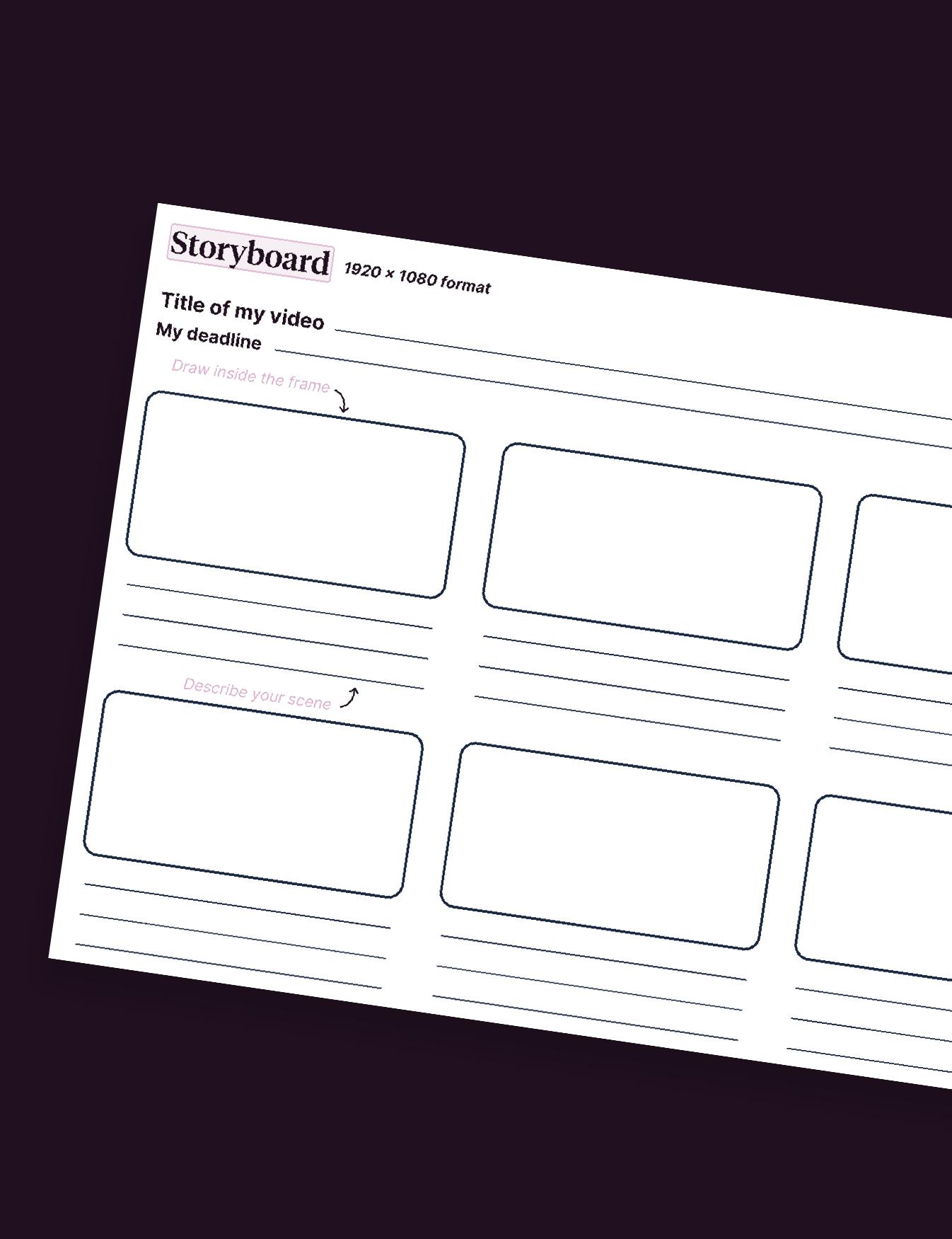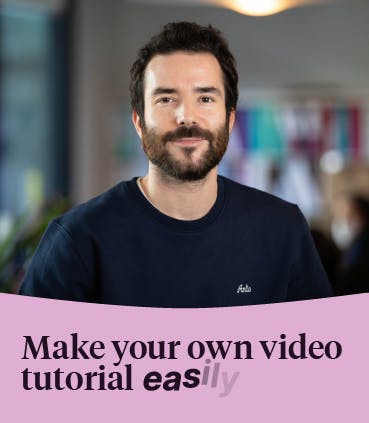Video creation: 10 questions to define your charter
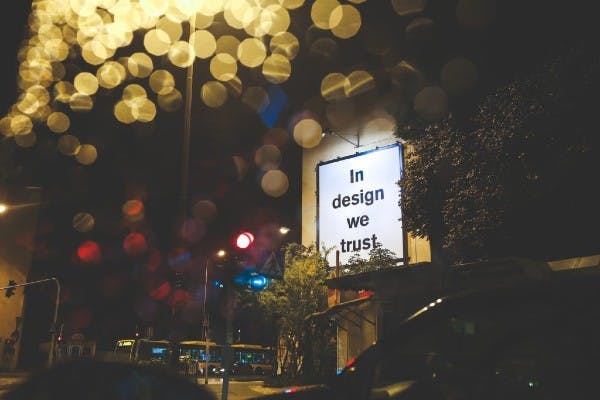
Armed solely with their graphic charter, companies mistakenly venture into video production without having taken the time to establish a video charter. A video charter comprises a set of elements to be defined in order to effectively design your video:movement, changes in typography and colours, transitions, etc. This section lists all the prerequisites for venturing into video creation, through 10 questions.
Wrongly, companies armed with their graphic charter launch themselves into video creation without having taken the time to formalize what their charter would be.
This one includes a set of elements: the movement, the modification of typographies and colors, the transitions… which must be imperatively taken into account.
This article lists, through 10 questions, all the prerequisites to think and design in order to be perfectly armed when you start creating video.
Learn more: Pitchy offers you to put your professional videos in your graphic charter.
Think about font and color in video mode
For readability reasons, you may need to change the color of your logo and the typeface you use for your communications. This process, which you probably started with the design of your website or your communications, should be extended to your videos. Do some tests! For example, test the embedding of your logo and font on a video and adjust the shot according to the readability of the latter. Above all, don’t hesitate to break away from your usual fonts to be better understood.
Designing the visual in poster mode?
The principle of a video is to distribute information over time. Hence the idea of not drowning your audience with too much information in one sequence.
Our best practice is to think of your visual like a print poster. The wording is limited to an essential message.
What shapes for what movement?
A first recovery work is necessary. The video charter is an extension of the print and web graphic charter. Initially, it is therefore necessary to recover all the elements that can be reused in video creation: logo, graphic elements of your communications:
- Geometric shapes;
- Banners;
- Color codes,
- Pictos…
Should the video layout remain sober and secondary?
In B2B, the video layout should remain relatively discreet while reminding your graphic charter. The layout should be simple, readable and should not interfere with the content of the video. In other words, an animation or a transition, however well done, must not prevent the reading of the keywords. Prioritize readability over aesthetics.
Similarly, the layout of an interview must remain informative. The value of the content remains in the speech. With this in mind, make sure to add subtitles to your videos so that your content can be viewed on the move or without sound.
Acceleration or deceleration of motion, what to choose?
Motion design is the art of putting an intention, a feeling into motion. With this in mind, you must think about the dynamics of your movements in your video charter.
As far as dynamics are concerned, you can decide to accelerate or decelerate certain movements or sequences. Changing the perception of the movement in its speed allows you to give it quality and importance. Think about the rendering of a timelapse, for example, which allows you to analyze movements in accelerated mode over a long period of time to bring dynamism and a swarming effect that is particularly sought after in event videos. And in the other direction, think of slow motion, when it comes to dissecting the functionality of a product in a presentation video. Think of sports brands, for example: the editing is often choppy and accelerated.
The editing and motion design should reflect the athletic effort, the (heart) rhythm, the dynamism of the people and products that embody the brand. Luxury products will have spots with a slow tempo and fluid movement. In the same way, the banking and insurance sector will traditionally choose slow movements, fluid editing, animations of sequences with graphic elements with rounded forms. The idea is to play on the feeling of confidence, reassurance and security.
What does time in motion mean?
In all cases, movement should enhance the reading experience. To that end, consider animating your movements from left to right to follow the flow of time and the natural movement of reading.
Another example, a shot of a face facing the future will turn to the right and not to the left… Temporality has a laterality when it comes to motion.
Fluidity versus mechanical movement, what to choose?
Another aspect to consider when formalizing your video charter. Do you want to animate in an organic way – like the liquid motion we describe in another article (available here) – or in a mechanical way. It all depends on the communication object. At Apple, the marketing department has decided to break the codes, their video charter involving a very dynamic editing, which leaves little room for the audience to breathe in order to emphasize the creativity and the profusion of ideas possible using their material.
Breaking the codes or following them?
Obviously, the better known your brand is, the more you can afford to go off the beaten path because your brand is easily recognized and identifiable.
If the spirit of your videos is to get a message across to as many people as possible, your video charter should be unanimous and consensual. You can therefore decide to keep a very strict video charter for internal communication and be more creative for marketing campaigns.
Because the very fact of taking sides is synonymous with not pleasing everyone. Just remember that the success of a good video charter lies in the coherence between the message and the brand image. For example, there are some very strong ads that don’t always hit the mark.
On the other hand, other companies have decided to break the codes to give themselves an innovative and digital image aimed at young executives who travel. N26, the neobank, has taken a very strong visual approach, very colorful, with a flat design and a very rhythmic editing that corresponds to the pop tones and current visual creations.
Motion design in all videos?
Motion design is a limitless field of expression. However, it requires a lot of technique and reflection. In this sense, it lends itself less to so-called spontaneous content, hot reactions, messages that aim for simplicity. Its use is more marketing and advertising.
Its use in other video needs to be done with parsimony: make a good intro, a good outro, and dress up the capture soberly if necessary.
How to encourage inspiration in your productions?
Motion design is a fast-moving discipline. So it’s important to stay informed about the trendy formats. Sites like the design blog, Codrops, Pinterest, Behance or 99deisgns.fr are already a good starting point for your monitoring. You can also keep a close eye on viral formats on social networks (cf. Brut, Konbini, Vice or Explicite).
Resources
